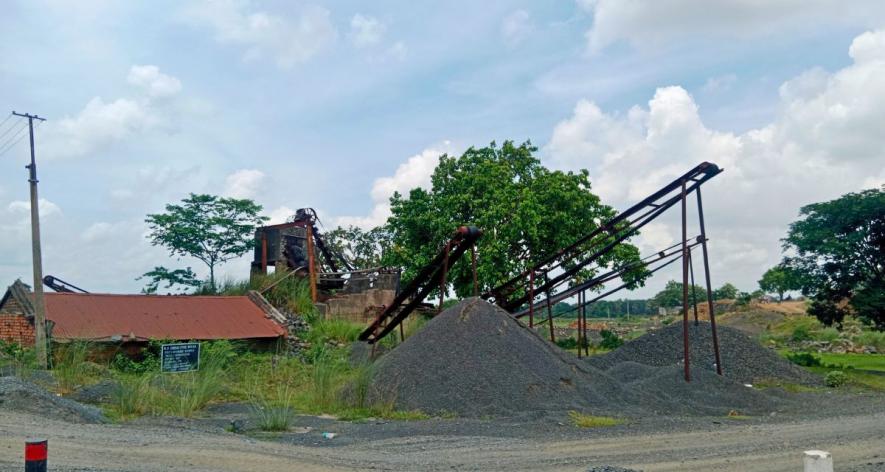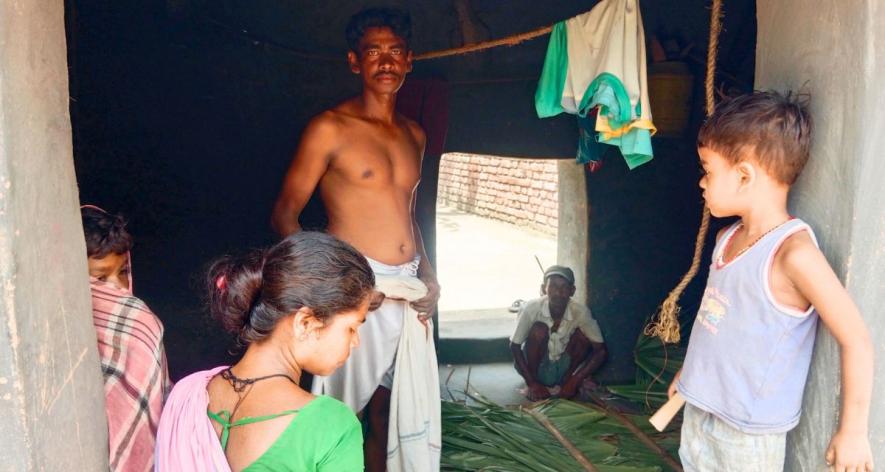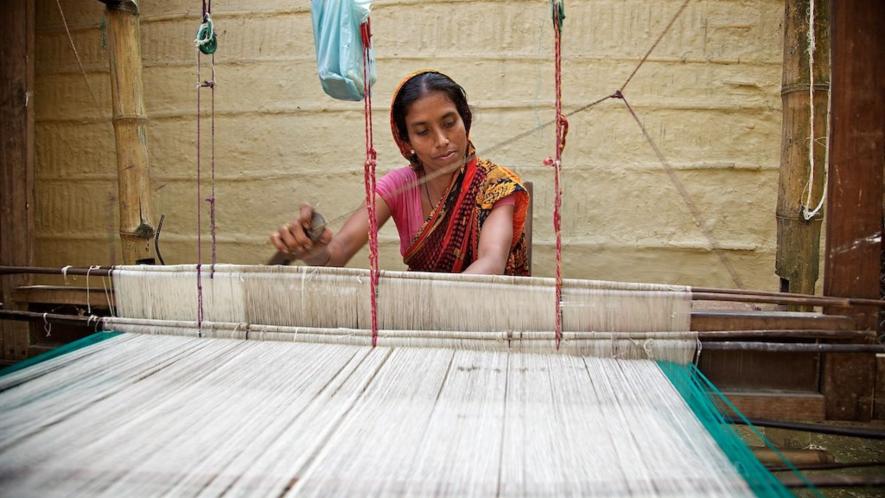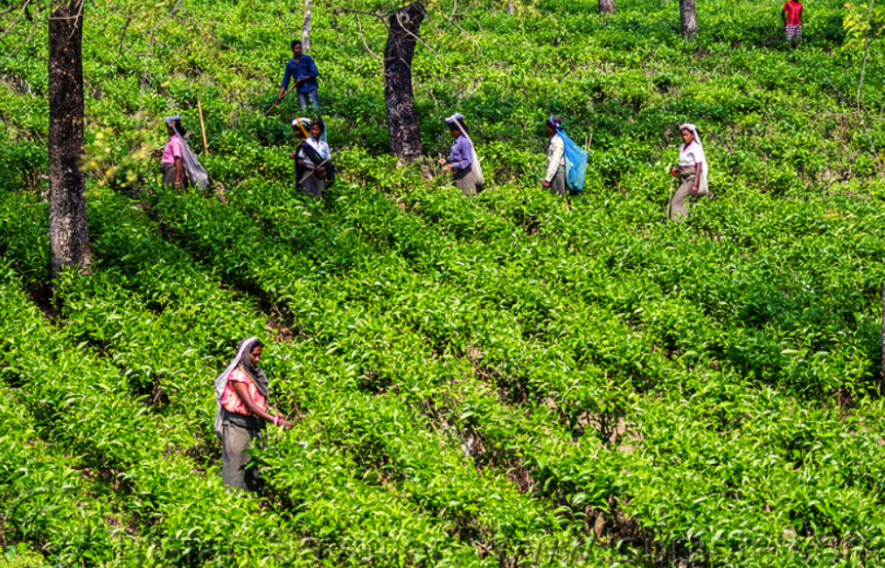The Savagery of the War Against the Palestinian People
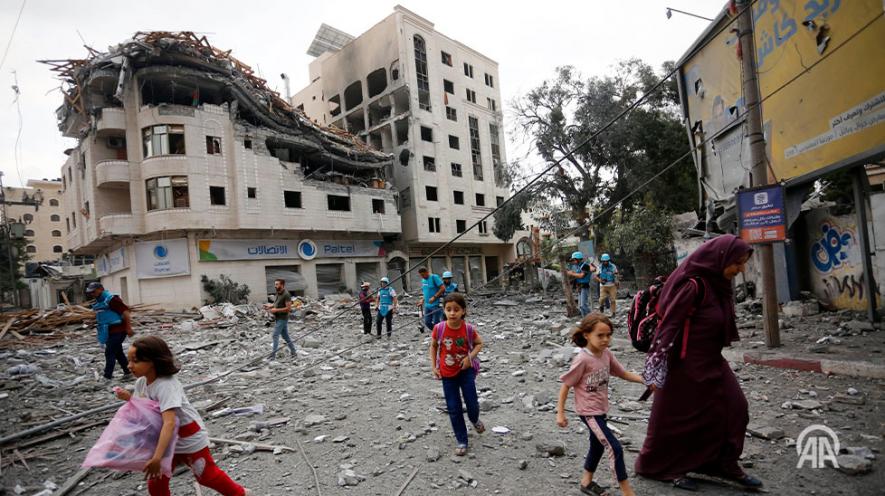
Residents move away for safer spots amid destroyed buildings and debris around the Palestinian Telecommunications Company, which was targeted, after Israeli airstrikes in Gaza Strip on October 10, 2023. Photo: Anadolu Agency
Who knows how many Palestinian civilians will be killed by the time this report is published? Among the bodies that cannot be taken to a hospital or a morgue, because there will be no petrol or electricity, will be large numbers of children. They will have hidden in their homes, listening to the sound of the Israeli F-16 bombers coming closer and closer, the explosions advancing toward them like a swarm of red ants on the chase. They will have covered their ears with their hands, crouched with their parents in their darkened living rooms, waiting, waiting for the inevitable bomb to strike their home. By the time the rescue workers get to them under the mountains of rubble, their bodies would have become unrecognizable, their families weeping as familiar clothing or household goods are excavated. Such is the torment of the Palestinians who live in Gaza.
A friend of mine in Gaza who has a 17-year-old child told me on the first night of this recent spell of Israeli bombing that his child has lived through at least ten major Israeli assaults on the Palestinians in Gaza. As we spoke, we made a list of some of the wars we could remember (because these are Israel’s wars, we are using the Israeli army names for their attacks on Gaza):
- Operation Summer Rains (June 2006)
- Operation Autumn Clouds (October-November 2006)
- Operation Hot Winter (February-March 2008)
- Operation Cast Lead (December 2008-January 2009)
- Operation Running Echo (March 2012)
- Operation Pillar of Cloud (November 2012)
- Operation Protective Edge (July-August 2014)
- Operation Black Belt (November 2019)
- Operation Breaking Dawn (August 2022)
- Operation Shield and Arrow (May 2023)
Each of these attacks pulverizes the minimal infrastructure that remains intact in Gaza and hits the Palestinian civilians very hard. Civilian deaths and casualties are recorded by the Health Ministry in Gaza but disregarded by the Israelis and their Western enablers. As the current bombing intensified, journalist Muhammad Smiry said, “We might not survive this time.” Smiry’s worry is not isolated. Each time Israel sends in its fighter jets and missiles, the death and destruction are of an unimaginable proportion. This time, with a full-scale invasion, the destruction will be at a scale not previously witnessed.
The Ruin of Gaza
Gaza is a ruin populated by nearly two million people. After Israel’s horrific 2014 bombardment of Gaza, the United Nations reported that “people are literally sleeping amongst the rubble; children have died of hypothermia.” A variation of this sentence has been written after each of these bombings and will be written when this one finally comes to an end.
In 2004, Israel’s National Security Director Giora Eiland said that Gaza is a “huge concentration camp.” This “huge concentration camp” was erected in 1948 when the newly created Israeli state’s ethnic cleansing policy removed Palestinians into refugee camps, including in Gaza. Two years later, Israeli intelligence reported that the refugees in Gaza had been “condemned to utter extinction.” That judgment has not altered in the intervening 73 years. Despite the formal withdrawal of Israeli settlers and troops in 2005, Israel remains the occupying power over the region by sealing off the land and sea borders of the Gaza Strip. Israel decides what enters Gaza and uses that power to throttle the people periodically.
Politicide
When the Palestinians in Gaza tried to elect their own leadership in January 2006, Hamas—formed in the first Intifada (Uprising) of 1987 in Gaza—won the election. The victory of Hamas (the Islamic Resistance Movement) was condemned by the Israelis and the West, who decided to use armed force to overthrow the election results. Operation Summer Rains and Operation Autumn Clouds introduced the Palestinians to a new dynamic: punctual bombardment as collective punishment for electing Hamas in the legislative elections. Gaza was never allowed a political process, in fact, never allowed to shape any kind of political authority to speak for the people. Israel has tried with force to eradicate Gaza’s political life and to force the people into a situation where the armed conflict becomes permanent. When the Palestinians conducted a non-violent Great March of Return in 2019, the Israeli army responded with brute force that killed two hundred people. When a non-violent protest is met with force, it becomes difficult to convince people to remain on that path and not take up arms.
As this conflict takes on the air of permanency, the frustration of Palestinian politics moves away from the impossibility of negotiations to the necessity of armed violence. No other avenue is left open. Palestine’s political leadership has been either tethered by the European Union and the United States and so been removed from popular aspirations or—if it continues to mirror those aspirations—it has been sent to one of Israel’s many, harsh prisons (four of 10 Palestinian men are in or have been in prison, while the leaders of most of the left parties spend long periods there under “administrative detention” orders). Israeli sociologist Baruch Kimmerling has argued that the Israeli policy toward the Palestinians has resulted in “politicide,” the deliberate destruction of Palestinian political processes. The only road left open is armed struggle.
Indeed, by international law, armed struggle against an occupying power is not illegal. There are many international conventions and United Nations resolutions that affirm the right of self-determination: these include, Additional Protocol 1 of the 1949 Geneva Conventions, UN General Assembly Resolution 3314 (1974), and UN General Assembly Resolution 37/43 (1982). The 1982 resolution “reaffirms the legitimacy of the struggle of peoples for independence, territorial integrity, national unity and liberation from colonial and foreign domination and foreign occupation by all available means, including armed struggle.” You could not have a stronger statement that provides legal sanction for armed struggle against an illegal occupation.
Why does Hamas attack Israel? Because a political grammar has been imposed on the relationship between the Palestinians and the Israelis by the nature of the Israeli occupation. Indeed, any time there is a modest development for talks—often brokered by Qatar—between Hamas and the Israeli government, those talks are silenced by the sound of Israeli fighter jets.
War crimes
Each time these Israeli fighter jets hammer Gaza, leaders of Western countries line up metronomically to announce that they “stand with Israel” and that “Israel has a right to defend itself.” This last statement—about Israel having the right to defend itself—is legally erroneous. In 1967, Israeli forces crossed the 1948 Israeli “green lines” and seized East Jerusalem, Gaza, and the West Bank. United Nations Security Council Resolution 242 sought the “withdrawal of [Israeli] armed forces from territories occupied in the recent conflict.” The use of the term “occupied” is not innocent. Article 42 of the Hague Regulations (1907) states that a “territory is considered occupied when it is actually placed under the authority of the hostile army.” The Fourth Geneva Convention obliges the occupying power to be responsible for the welfare of those who have been occupied, most of the obligations violated by the Israeli government.
In fact, as far as Gaza has been concerned since 2005, Israeli high officials have not used the language of self-defense. They have spoken in the language of collective punishment. In the lead-up to the ongoing bombing, Israel’s Prime Minister Benjamin Netanyahu said, “We have decided to halt electricity, fuel, and goods transfer to Gaza.” His Defense Minister Yoav Gallant followed up, saying, “I have ordered a complete siege on the Gaza Strip. There will be no electricity, no food, no fuel, everything is closed.” Then, Israel’s Energy Minister Israel Katz said, “I instructed that the water supply from Israel to Gaza be cut off immediately.” Having followed up on these threats, they have sealed Gaza—including by bombing the Rafah crossing to Egypt—and closed down the lives of two million people. In the language of the Geneva Conventions, this is “collective punishment,” which constitutes a war crime. The International Criminal Court opened an investigation into Israeli war crimes in 2021 but was not able to move forward even to collect information.
The children huddle in their rooms waiting for the bombs sit in the dark because there is no electricity and wait—with parched throats and hungry bellies—for the end. After the 2014 Israeli bombardment, Umm Amjad Shalah spoke of her 10-year-old son Salman. The boy would not let his mother go, being in terror of the noise of the explosions and the death around him. “Sometimes he screams so loudly,” she says. “It almost sounds like he’s laughing loudly.”
Vijay Prashad is an Indian historian, editor, and journalist. He is a writing fellow and chief correspondent at Globetrotter. He is an editor of LeftWord Books and the director of Tricontinental: Institute for Social Research. He has written more than 20 books, including The Darker Nations and The Poorer Nations. His latest books are Struggle Makes Us Human: Learning from Movements for Socialism and (with Noam Chomsky) The Withdrawal: Iraq, Libya, Afghanistan, and the Fragility of US Power.
This article was produced by Globetrotter.
